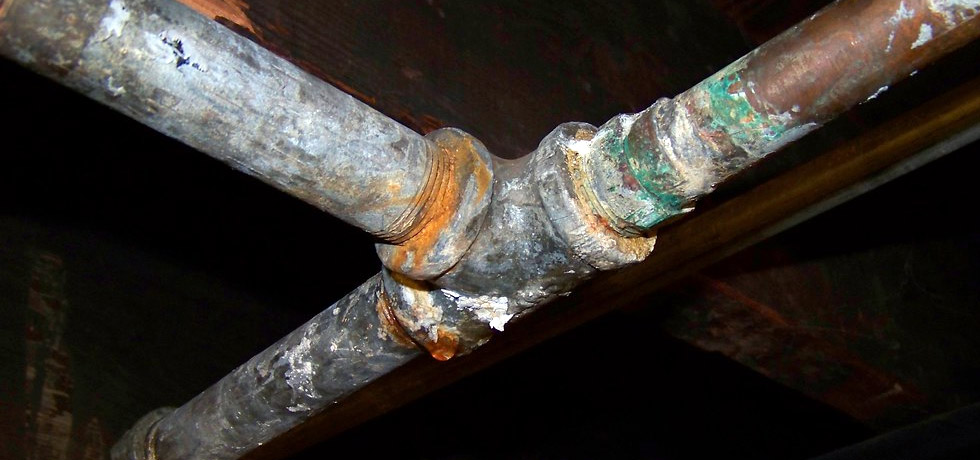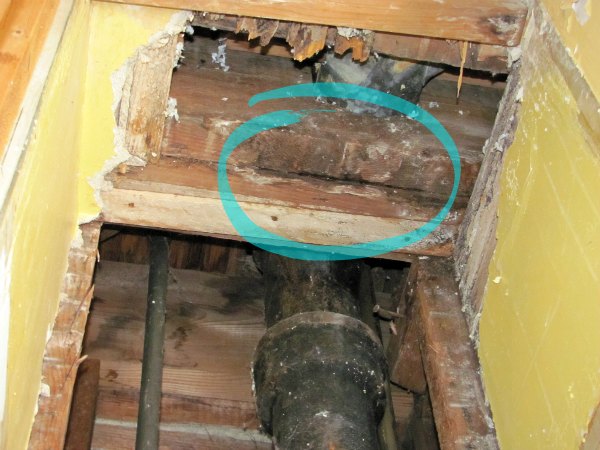How to Efficiently Handle Plumbing Issues in Older Homes
How to Efficiently Handle Plumbing Issues in Older Homes
Blog Article
This great article following next in relation to Common Plumbing Challenges In Old Buildings is amazingly enjoyable. You should give it a look.

Older homes frequently feature appeal, character, and background, but they can likewise bring a host of pipes problems. Whether you're dealing with maturing pipes, low tide pressure, or leakages, understanding how to attend to these common troubles is important to maintaining a risk-free and practical home. In this overview, we'll check out the regular plumbing obstacles dealt with by older homes and give functional services to maintain your plumbing in top form.
Understanding Usual Pipes Concerns
Aging Pipes
Among the most typical concerns in older homes is aging pipelines. Depending upon the period in which your home was built, the pipelines might be made from materials that have actually deteriorated with time, such as galvanized steel, cast iron, and even lead. These products can wear away, become breakable, or create leaks, bring about water damage and prospective carcinogen.
Water Quality Testing
Older pipelines can influence the quality of your water. Conduct a water top quality examination to check for pollutants such as lead, corrosion, or various other impurities that may be presented by aging pipes.
Solutions for Typical Pipes Concerns
Changing Aging Pipes
If your home has old, weakening pipes, take into consideration replacing them with contemporary materials like copper or PEX. This can be a significant investment, however it will avoid future problems and enhance the safety and security and integrity of your plumbing system.
Repairing Low Tide Stress
To deal with low tide stress, start by cleaning or replacing old fixtures and eliminating mineral accumulation in the pipelines. If the trouble lingers, it might be essential to change sections of corroded pipes.
Repairing and Replacing Leaking Pipelines
For tiny leaks, you can use pipe clamps or epoxy putty as a short-term repair. Nevertheless, it's finest to replace leaking pipes completely to prevent additional damage.
Upgrading Fixtures
Upgrading old fixtures to modern, water-efficient models can boost your home's pipes efficiency and minimize water usage. Try to find components with the WaterSense tag for the best effectiveness.
Handling Pipe Corrosion
If your pipelines are corroded, changing them with corrosion-resistant products like copper, PVC, or PEX is the very best service. Regular inspections and water top quality upkeep can aid stop additionally rust.
Low Water Stress
If you're experiencing low tide pressure, it could be due to natural resources, rust inside the pipes, or old fixtures that are no more working efficiently. This can be a significant hassle, especially in locations like showers and sinks.
Dripping Pipes
Leakages are one more regular issue in older homes, usually brought on by corroded or damaged pipes. Even tiny leakages can result in substantial water damage, mold and mildew growth, and raised water expenses if not addressed immediately.
Outdated Components
Outdated pipes fixtures such as faucets, commodes, and showerheads not only look old however may additionally be less effective, prone to leaks, or inappropriate with modern pipes standards.
Pipeline Corrosion
Rust is a common trouble in older pipes, specifically those made from galvanized steel or cast iron. Rusty pipes can restrict water circulation, trigger discoloration, and ultimately bring about leaks or pipeline bursts.
Examining the Problem of Your Pipes
Inspecting Visible Pipelines
Start by checking any visible pipelines in your home, such as those in basements, crawl spaces, or under sinks. Try to find indicators of corrosion, leaks, or corrosion, which can show underlying problems.
Looking for Leaks
Check for leaks by checking locations around faucets, toilets, and under sinks. You can also monitor your water meter prior to and after a duration of no water use to spot concealed leakages.
When to Call a Specialist
While some plumbing issues can be handled with DIY options, there are times when it's ideal to call a professional. If you're managing major leaks, comprehensive rust, or are unclear concerning the condition of your pipelines, a qualified plumber can offer professional evaluation and repair service.
Preventive Upkeep Tips
Normal Evaluations
On a regular basis evaluate your pipes system for indicators of damage. Capturing concerns early can protect against costly repair work down the line.
Water Pressure Policy
Ensure your water pressure is within the advised array to stay clear of worrying your pipes and fixtures. A plumber can install a stress regulatory authority if required.
Water Top Quality Upkeep
Mount water filters or conditioners if your water high quality is poor. This can safeguard your pipes and components from damages caused by hard water or impurities.
Aggressive Pipe Replacement
If your home has older pipelines, think about proactive replacement before significant concerns develop. This can conserve you from emergency situation repair services and water damage.
Verdict
Managing plumbing issues in older homes requires a mix of caution, preventative maintenance, and timely upgrades. By recognizing the typical difficulties and knowing when to look for expert assistance, you can ensure your pipes system stays functional and reliable for several years to find.
Common Plumbing Issues in Older Homes and How to Fix Them
Owning an older home in Australia comes with its unique charm and a set of challenges, especially when it comes to plumbing. The Sunshine Coast has many older properties that can harbour plumbing problems that aren t just inconvenient but potentially costly. Here s a look at some common plumbing issues in older homes and expert advice on how to handle them.
Outdated Piping Materials
Many older homes were built with galvanised steel, cast iron, or even lead pipes, materials that are far from ideal by today s standards. Galvanised pipes are prone to corrosion and clogging, while lead pipes pose serious health risks.
How to Fix:
Replacing old pipes is a job for a professional. Upgrading to copper or PVC piping not only enhances water quality and flow but also increases the property s safety and value. If you suspect your home has outdated materials, a licensed plumber can conduct a thorough inspection and recommend the best course of action.
Corrosion and Pipe Degradation
Over time, exposure to water and minerals can cause pipes to corrode, leading to leaks, bursts, and water contamination. Corrosion is especially common in homes over 50 years old.
How to Fix:
Regular inspections can catch early signs of corrosion. If corrosion is found, the affected section of piping often needs to be replaced. For homes with extensive corrosion, a complete plumbing overhaul might be necessary. It s crucial to consult with a plumbing expert to understand the extent of the issue.
Tree Root Intrusion
Older neighbourhoods usually have mature trees whose roots can intrude into pipe lines, causing blockages or damage. This is particularly problematic for sewer lines, where roots seek out water sources.
How to Fix:
A plumber can use a specialised camera to inspect sewer lines for root intrusion. If roots are a problem, methods like root cutting or hydro-jetting can clear the obstruction. In severe cases, part of the pipe may need replacing. Consider root barriers around the piping to prevent future issues.
Inadequate Water Pressure
Low water pressure in older homes can be due to various factors, including corroded water lines, sediment build-up in pipes, or outdated fixtures.
How to Fix:
First, check if the low pressure is isolated to one area or throughout the house. Replacing old fixtures can sometimes resolve the issue. However, if the problem is more widespread, it might be due to sediment or corrosion. Flushing the system or replacing the affected pipes usually restores normal pressure. Again, a professional assessment is advisable.
Outdated Fixtures
Older homes often feature fixtures that are not only visually dated but functionally inefficient. This includes everything from toilets and taps to showerheads and washing machine hoses.
How to Fix:
Updating these fixtures can improve both water efficiency and the aesthetic appeal of your home. Modern fixtures are designed to conserve water, which can significantly reduce your water bill and lessen your environmental impact.
Conclusion
Maintaining the plumbing in an older home requires a proactive approach. Regular checks and updates are key to preserving these beautiful properties. If you re facing plumbing issues in your older home, it s best to call on experienced professionals like Green & Gold Plumbing & Gas. With the right expertise, even the most daunting plumbing problems can be resolved, ensuring that your home s character is maintained while its functionality is enhanced.
https://gandgplumbing.com.au/common-plumbing-issues-in-older-homes-and-how-to-fix-them/

As an enthusiastic reader about Common Plumbing Challenges In Old Buildings, I was thinking sharing that piece of content was really useful. In case you enjoyed reading our blog entry plz don't forget to pass it around. Thanks a bunch for your time. Revisit us soon.
Click Here Report this page